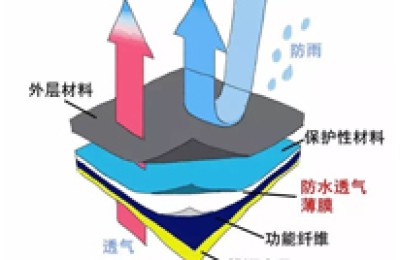During the National Day, the sudden drop in temperature quickly boosted the sales of winter clothing fabrics, especially down jacket fabrics. Affected by the combination of continuous cold air and continuous rainy weather, the apparel industry has experienced a very obvious growth rate both online and offline since October.
As a result, after the National Day, the entire textile and clothing market was shaken by the news, and trucks loading goods from gray cloth factories had to queue up. Trucks entering the warehouse from the dyeing factory also have to queue up, and there are not enough trucks in the market. Immediately afterwards, the warehouses of some weaving factories became empty and their stocks were gone, and some dyeing factories began to run out of stock.
Is it really just a “cold winter” news that can stir up the textile market that has been silent for more than half a year? It’s obviously impossible.
Finished product market stocking and winter clothing fabric orders “collide”
Familiar Everyone in the fabric market knows that around October and November in the second half of the year, the finished product spot market will usher in a relatively concentrated year-end stocking. This is the more common “market order” in the market. During this period, the order volume is large, the types are limited, and the duration is short.
This is the time now, and the orders are coming more obviously than in any previous year. The main reason for this situation is that the epidemic abroad is severe and a large number of overseas clothing companies have closed down. This has led to a significant decrease in clothing and fabric trade over the past six months compared with previous years. Now that their inventory has bottomed out, it is time to replenish supplies.
End-of-year replenishment in the domestic fabric market
Also due to the extremely limited number of orders in the first half of the year due to the epidemic, many textile and apparel companies missed the spring and summer markets and had high inventories. The lack of confidence in the future market has led to insufficient enthusiasm for stocking in the spot market. Now the backlog of replenishment demand has exploded, and all kinds of orders have been put into battle. When encountering the current orders for winter clothing fabrics, the market has been crowded all at once, reaching the highest level this year. The market is at its peak.
It is normal for the temperature to drop now, but cold winter is still unknown!
Does the recent snowfall and cooling in many places in northern my country mean it must be a cold winter? Many experts believe that the “La Niña” event this winter is only predicted to occur, and it is still unknown whether it will actually occur. To take a step back, even if it is a really cold winter this year, will it really drive the clothing market to continue to sell well and make fabrics popular? It’s hard to say!
The epidemic is not the main reason why the clothing industry is in trouble, and the cold winter + the end of the global epidemic cannot save the clothing industry.
There are actually some doubts about the market rebound in October. Currently, the global fashion industry is at a trough and has overcapacity. Whether China’s apparel industry can take advantage of this wave of positive trends and continue to improve is a false proposition. Only by grasping the trend of personalization and quality of clothing, rather than relying on hyped cold winters and foreign trade orders, can the clothing industry truly get out of trouble in the future!
Behind the skyrocketing market prices in October, will the apparel industry, which has been in a bad year, usher in the “New Year”?
The booming production and sales of domestic textile and clothing products in October made clothing people excited for a while after waiting for more than half a year. The sharp cooling is indeed an important reason that cannot be ignored for the recent surge in sales of down jackets and cotton-padded clothes. The National Oceanic and Atmospheric Administration of the United States announced that the “La Niña” phenomenon has officially formed. Coupled with the imminent arrival of Typhoon Chanhong and the melting of Arctic sea ice, the winter of 2020 is even predicted to be the coldest year in the past 60 years. Keep warm. It’s not surprising that down jackets with relatively good performance are being snapped up.
Thanks to the “whole wheat bread effect”, down jackets are considered by many consumers as “big items” with the attributes of durable goods like home appliances and cars. As residents As consumption upgrades, the recognition of high-end down jackets represented by Bosideng and Canada Goose has been significantly enhanced. After the down jacket market exceeded 100 billion in 2018, it is still growing at a rate of more than 10%. It is expected that China’s down jacket market will reach 160 billion in 2020, and the global figure will be as high as 1.4 trillion.
In the domestic clothing market, during the National Day and Mid-Autumn Festival holidays, the Hong Kong stock clothing sector collectively rose. From October 1 to October 8, Li Ning rose 6.94%, Xtep International rose 15.28%, and Anta Sports rose 6.43%. Some clothing concept stocks in A-shares, such as Ribo Fashion, Sanfu Outdoor, Meibang Apparel, Semir Apparel, Hailan Home, and Pathfinder, have also set off a wave of repurchase.
In the international market, the European Union and Japan have successively released textile and clothing retail sales data in August. After both the EU and Japan showed a downward trend in the textile and apparel market in July, EU apparel retail sales rebounded in August, with the overall market size returning to more than 85% of the same period last year; Japanese apparel retail sales continued to decline, down 7.3% from July, but The market size has also returned to more than 80% of the same period last year.
Due to the weak performance of the local apparel sector since the epidemic, the reasons are concentrated in retail sales and inventory. Clothing retail performance in August has returned to pre-epidemic levels, and local clothing consumption has basically recovered. CombinedBased on the adjustment of brand company’s business strategy and mid-term report data, Chuangjia Platform believes that inventory risks in the apparel industry are controllable and inventory pressure is in the improvement range.
As Double Eleven approaches, many clothing companies are warming up in advance and preparing for a “turnaround”, which seems to indicate that the clothing market is about to survive the “cold winter”. But is this really the case?
In fact, since 2019, the global apparel industry has been in dire straits. In the first half of the year, among the 15 representative companies in Hong Kong and A that have disclosed their semi-annual reports, only two companies achieved positive growth in net profit attributable to their parent companies, and many well-known leading companies experienced declines of more than 50%.
Meibang fell by 246.5%, Langzi fell by 103%, Semir fell by 97%, and Heilan House fell by 55.4%. Even many multinational clothing giants have also suffered due to the epidemic. The epidemic was caught off guard. Victoria’s Secret, American clothing brand J.Crew and other brands reported bankruptcies one after another. Gap, H&M, Zara, and Muji have also closed many stores around the world.
It can be seen that the epidemic is not the only reason for the decline of the clothing industry, so the market rebound caused by the control of the health crisis actually has some doubts. At the moment, the clothing industry Whether the industry’s rebound is a false proposition, the next earnings season may bring some answers to the market. </p








